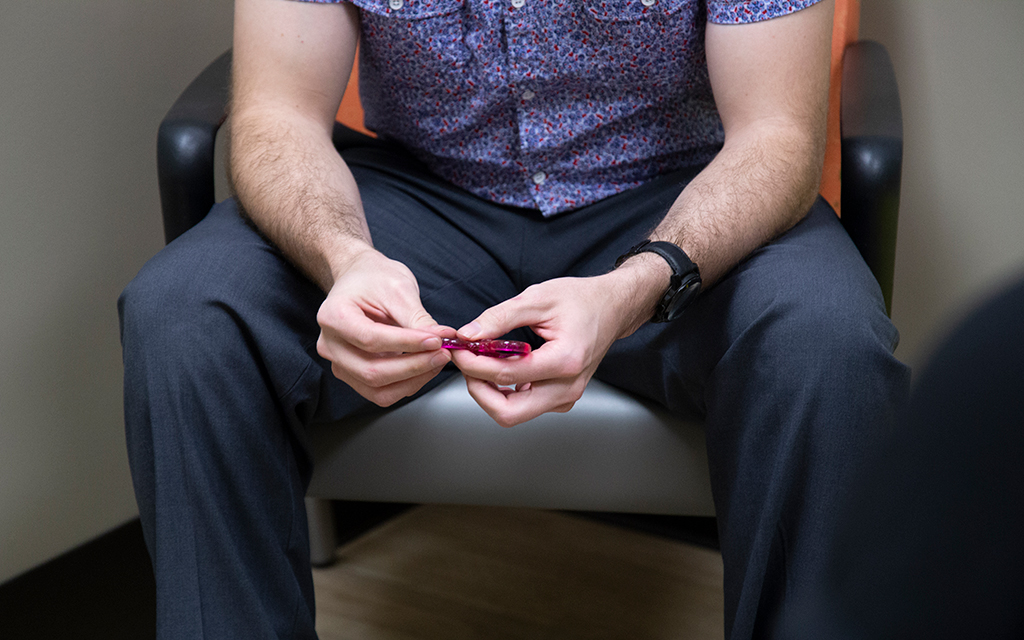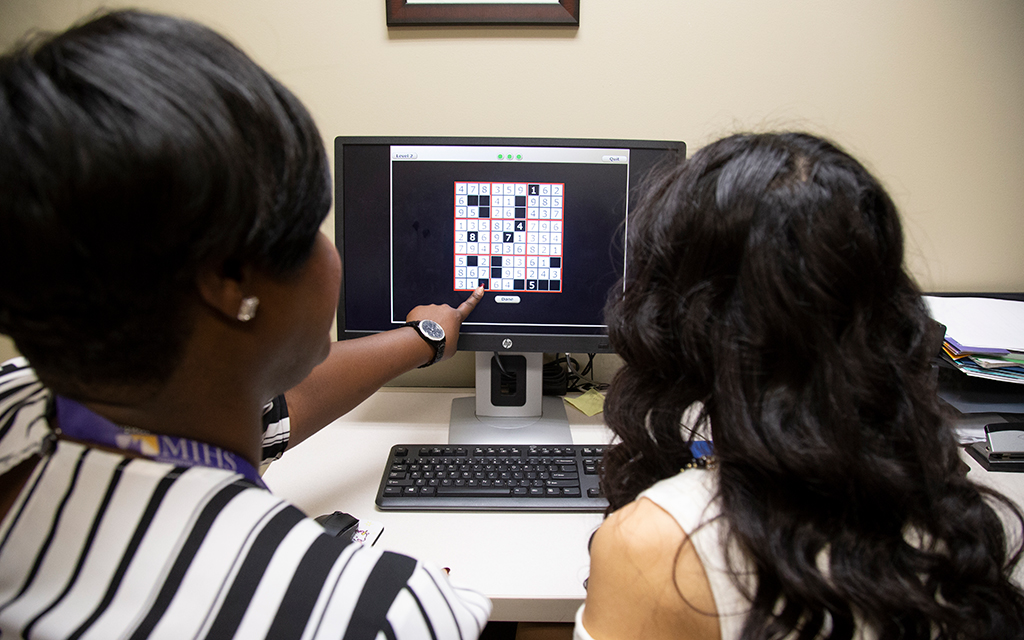PHOENIX – Valleywise Health is opening a second First Episode Center, an outpatient behavioral health center for young adults experiencing their first serious mental health episode.
It can’t come soon enough, health professionals say.
There is a dire need for programs that address mental health in young adults not just in Maricopa County but across the country, said Dr. Aris Mosley, a psychiatrist and medical director of the Valleywise Health First Episode Center in Avondale.
“When you have someone who has a brain health condition such as schizophrenia, you want to catch it early,” she said.
Arizona youth ranked 49th in the 2022 edition of Mental Health America’s annual report on the state of mental health in America. States with low rankings had a higher prevalence of mental illness such as depression, substance use disorder or some other emotional disturbance, as well as a lower rate of access to care.

“We want people to be able to access the service near where they live,” said Dr. Alicia Cowdrey, Valleywise’s outpatient medical director of behavioral health services, in discussing the First Episode Center’s new location in Mesa. (Photo courtesy of Valleywise Health)
Dr. Alicia Cowdrey, Valleywise’s outpatient medical director of behavioral health services, estimated that the community needs 14 more facilities similar to the First Episode Center to meet the current prevalence of young people with serious mental illnesses such as schizophrenia in Maricopa County.
Behavioral health experts say early treatment for young adults who have had a psychotic incident can be the difference between having a productive life and one spent in and out of hospitals and psychiatric treatment facilities. Early intervention also can take some pressure off understaffed inpatient psychiatric hospitals.
About 100,000 young people experience psychosis each year in the U.S, according to the National Institute of Mental Health and the National Alliance on Mental Illness. They say a person could be experiencing psychosis if they have delusions, hallucinations, incoherent, confused or inappropriate speech or behavior.
“Any time we have any sort of insult to the brain, it’s going to cause it to develop differently,” Cowdrey said. “We always want to intervene early with psychosis, and every person is different. It typically presents in young adults … but we always want to intervene early so that we can ensure that we can protect the brain.”
Cowdrey likened it to treating a broken arm. “If you went straight to the emergency room and got treatment, you are going to have a better outcome than if you were to wait a year or three years to get treatment. It’s not going to go back together quite as well.”
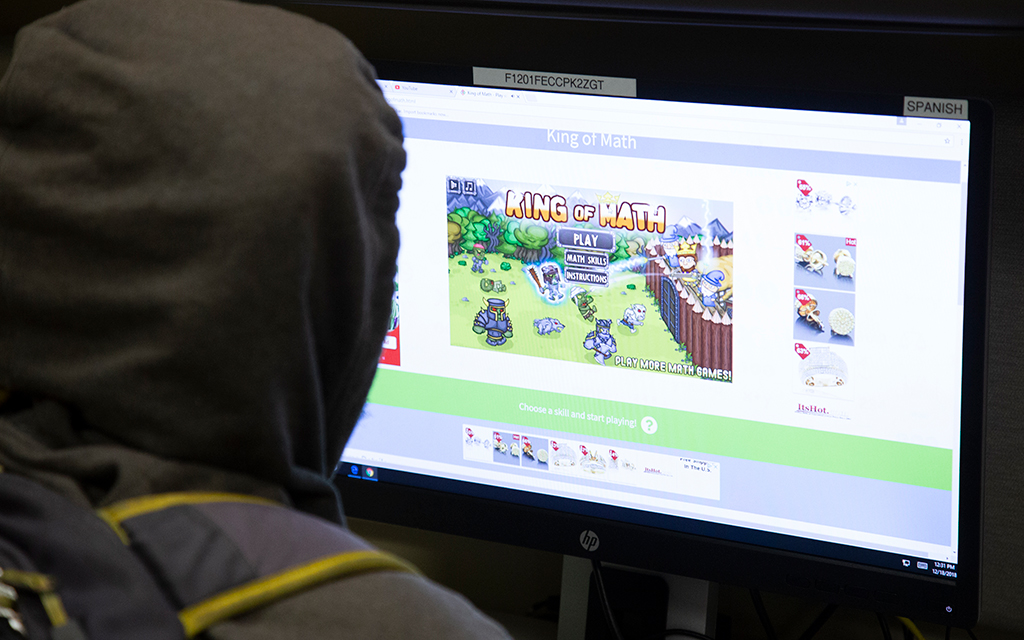
A patient decompresses with a computer game at Valleywise Health’s First Episode Center in Avondale. (Photo courtesy of Valleywise Health)
Research published in 2018 in JAMA Psychiatry concluded that the early intervention approach for psychosis can improve outcomes. An analysis of 10 randomized controlled trials compared treatment at centers for 2,176 patients with first episode psychosis over two years. The ones in early intervention programs had fewer hospitalizations, were more involved in school or work and were more engaged in treatment than those who received traditional care.
Valleywise’s First Episode team is comprised of a clinical coordinator, medical assistant, nurse, psychiatrist, recovery coach, a school and employment specialist, three team specialists, a registrar and program assistant and two front office staff members. Each client also is assigned a peer support specialist who has had a similar experience in terms of medication and possibly hospitalization and may be able to connect with the individual on a deeper level than the rest of the team..
Since psychosis is typically found more often in young adults, Mosley said, the center provides individual and family support, education and treatment as quickly as possible because the potential damage done to the brain heightens the longer the condition goes untreated.
The center, which treats young adults ages 15 to 25, opened in 2017 in Phoenix and relocated to Avondale the following year. Six years later, the facility is at full capacity with 89 patients. The second location in Mesa received its licensing June 27 and is expected to open in August.
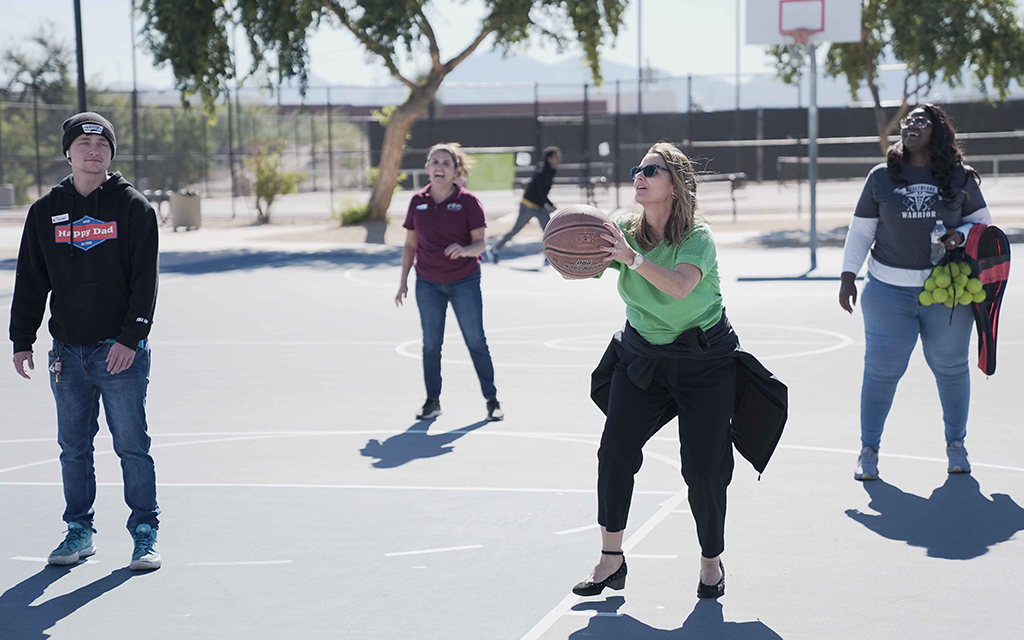
Valleywise Health’s First Episode Center staff enjoys a game of basketball with patients at their fall festival. (Photo courtesy of Valleywise Health)
Understanding psychosis
Psychosis and its connection to schizophrenia is often misunderstood. Cowdrey said psychosis occurs when a person has elevated levels of dopamine in the brain. The high dopamine level can alter a person’s perception of reality, she said.
Typically, “people might be seeing or hearing things that other people don’t see,” she said. “They might also become paranoid and perceive that things around them are different than how they are. Essentially, the brain is perceiving reality as different, so voices, hallucinations, delusions and paranoia can be common.”
The altered perceptions can cause inflammation in the brain, which can decrease cognition, Cowdrey said.
The initial psychotic episode is what Mosley called the “first break,” adding that many times that phase appears in the form of a mood disorder such as depression. It’s crucial to intervene early, she said, because the combination of dopamine levels and altered perceptions can cause the brain to develop differently, making it harder to treat later.
“It’s an incredibly alarming experience for people to have, as you can imagine,” Mosley said. “If you’re experiencing the world in one way that everyone around you isn’t, it’s pretty uncomfortable.”
What is schizophrenia?
Schizophrenia is one of the most common causes of psychosis, and it tends to affect more males than females. According to an article from Harvard Medical School, psychosis affects three out of 100 people in their lifetime, but only one out of 100 people will be diagnosed with schizophrenia.
An individual experiencing schizophrenia has experienced symptoms for a period of time that’s notably longer than psychosis, Cowdrey said.
“If we were to look out the window, most likely … everyone would see a blue sky. But if I had schizophrenia, and I’m looking out the window, my brain might be telling me that the sky is red. There’s nothing that you’re going to be able to do to convince me that the sky’s not red because my brain is telling me that it’s red,” Mosley said.
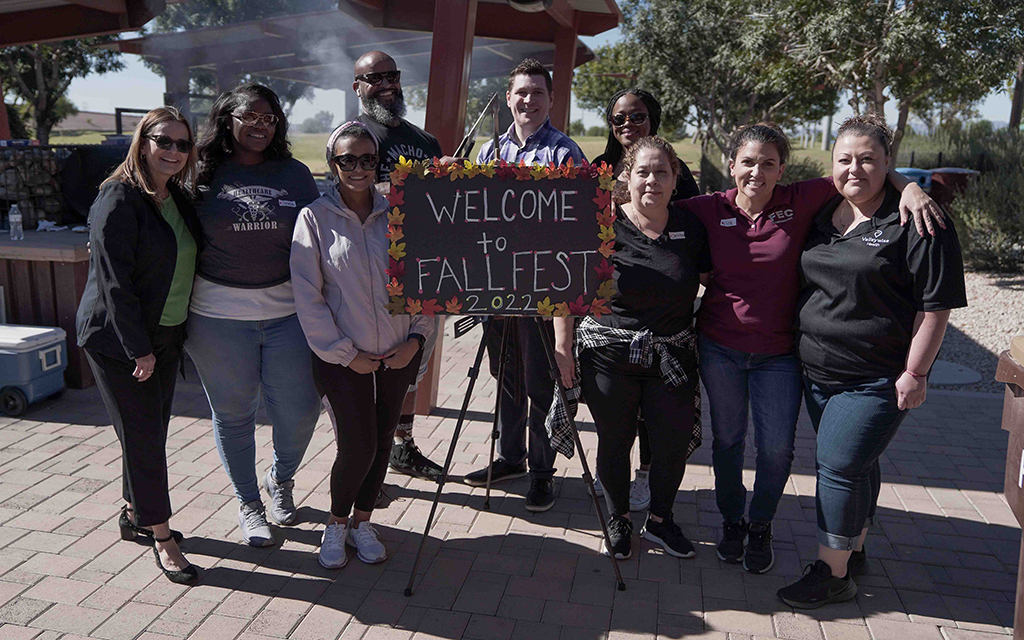
Patients at Valleywise Health’s First Episode Center celebrate at their fall festival. (Photo courtesy of Valleywise Health)
Treatment at First Episode
The majority of those treated at the outpatient center are referred from hospitals. Each person has an individual program that could include medication, one-on-one therapy and group sessions.
When a person begins treatment at a clinic for brain health conditions or disorders, they typically will see their psychiatrist once a month, Mosley said. She sees her patients once a week during their first month of treatment.
“That allows me to get to know the young person on a better level instead of letting so much time go,” she said. “If I see you once a week, I’m also going to be able to recognize if there are any side effects or difficulties with the medication. I’m going to be able to get those medications under better control and get them optimized more appropriately and quicker for the individual.”
Medication typically plays a role in treatment and that could be a pill or an injectable, Cowdrey said. Antipsychotic medications will help reduce the dopamine level in the brain, she said, adding that young people often need low doses to keep symptoms under control.
Valleywise Health provides care for Maricopa County’s public health care system and is the primary provider of inpatient psychiatric beds for Maricopa County residents who have been court-ordered to get mental health care. Valleywise hopes to change the stigma around psychosis and schizophrenia, as 43.8 million adults experience mental illness each year, according to the National Alliance on Mental Illness. The Mental Health Foundations reports that 90% of people with mental health problems say stigma and discrimination play a negative role in their lives.
Cowdrey said the Valleywise approach can “show people that there’s hope that, if they’re diagnosed with a brain health condition, they can get back on track with their life.”

